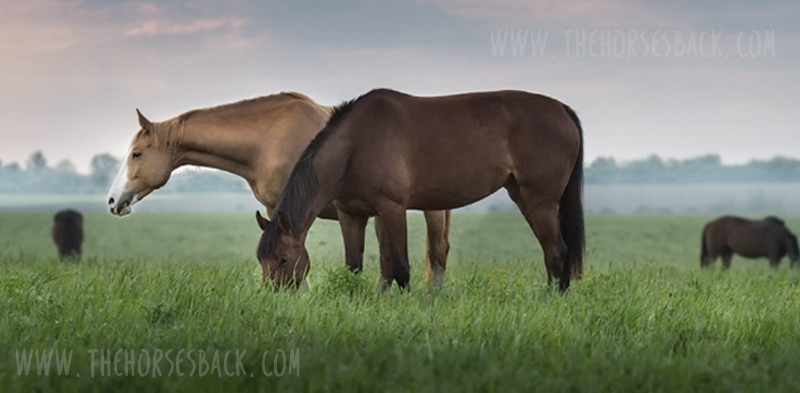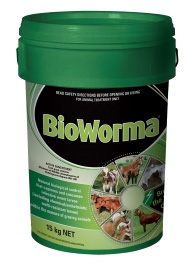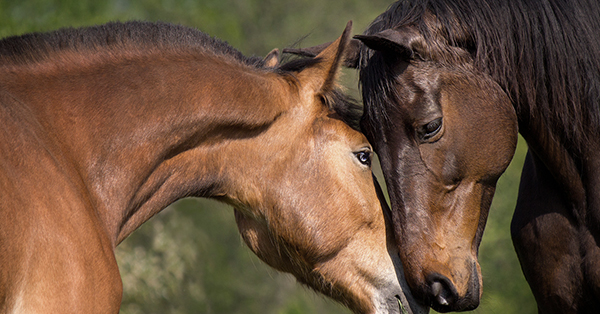 Australia has declared a new war on worms – and this time it’s biological.
Australia has declared a new war on worms – and this time it’s biological.
You may already have read about this wonder from Down Under, the “world’s first biological control for grazing animals”, on the equine news sites.
Instead of dosing our horses continually with chemical wormers, we now have the option of fighting parasites by feeding our horses an innovative new product: a supplement containing a fungus that passes through the horse to kill the larvae in manure.
Called BioWorma®, this new supplement can, through continued use as part of a worming strategy, dramatically reduce roundworm larvae in pasture by an average of 84% (across livestock species – the lowest effect recorded has been 50%, the highest over 90%).
Perhaps, like me, you have quite a few questions about exactly what this means for horse health.
Recently, I caught up with Chris Lawlor, CEO of International Animal Health Products, the commercial producer of BioWorma®, at the Australasian Equine Science Symposium 2018. (The other partners included scientists at CSIRO, Australia’s national science agency.)
Between his presentation, our conversation and other reading, I’ve taken the opportunity to get my head around this remarkable new product.
© All text copyright of the author, Jane Clothier, https://thehorsesback.com.
What is this biological wormer and how does it work?
Duddingtonia flagrans is a nematophagous fungus that is found in pasture and manure around the world. The term nematophagous is Greek and means ‘worm-eating’.
Good news for horse owners is that once the fungus is resident in a manure pile, it creates a microscopic net that traps, paralyses and consumes the larvae of parasitic worms – and in particular, nematodes.
This means it basically consumes the larvae of large and small roundworms, the gastrointestinal parasites that are amongst the dangerous for our horses.
 How do we use this biological wormer?
How do we use this biological wormer?
Duddingtonia flagrans has been added to a protein meal that we can feed as a supplement to horses (vets can obtain it ‘neat’).
It is best used strategically within a rotational paddock system. In practice, this means that you take the following recommended steps:
- Deworm your horse or herd with conventional chemical wormers. All horses in the same paddock must be treated, or this process becomes pointless.
- Conduct a fecal egg count to see how much your horse is shedding.
- Once the egg count is low, move your horse into a fresh paddock just after deworming (yes, I know this isn’t always possible, but please read on – there’s another option).
- Give Bioworma in the horses’ feed, so that fresh manure in the new paddock is hosting worm-eating Duddingtonia. Repeat once or twice a year, until roundworm egg counts are negligible.
- Continue to use chemical dewormers for tapeworms, bots, neck threadworms, etc.
If you’re not in a position to rotate paddocks but are able to clear manure from your paddocks, then you can:
- Deworm your horse or herd with conventional chemical wormers.
- Conduct a fecal egg count to see how much your horse is shedding.
- Once the egg count is low, give Bioworma in the horses’ feed, just after deworming.
- Continue clearing manure from the paddock.
- Give Bioworma in the horses’ feed, once or twice a year, until roundworm egg counts are negligible.
- Continue to use chemical dewormers for tapeworms, bots, neck threadworms, etc.
Here’s the current research paper that covers the equine trials, in the July 2018 issue of Veterinary Parasitology. It’s Open Access so everyone can read it.
 Exactly which parasites are targeted?
Exactly which parasites are targeted?
Duddingtonia flagrans loves consuming the larvae of the following worms:
- Large strongyles (large red worms), including Strongylus spp., Triodontophorus spp. and Oesophagodontus spp
- Small strongyles (small red worms or cyathostomes), including Cyathostomum spp., Cylicocyclus spp. and Cylicostephanus spp
- Stomach Hair Worm (Trichostrongylus axei)
- Ascarids (Parascaris equorum)
- Threadworms (Strongyloides westeri)
- Pinworms (Oxyuris equi)
It doesn’t have any effect on:
- Tapeworms, which have an intermediate host – the forage mite, which isn’t on the Duddingtonia menu.
- The larvae of the botfly (Gasterophilus), which lays its eggs on the horse’s legs or coat.
- Onchocerca cervicalis (neck threadworms), which are not gastointestinal and are transmited by culicoides flies.
So, you’ll still need to deworm for tapeworms with a praziquantel or pyrantel product, and for bot larvae and neck threadworms with an ivermectin or moxidectin product.
Even so, that’s a lot of worms taken care of with this product, including the most dangerous of the lot.
And what’s the dosage?
As mentioned earlier, vets can buy straight Bioworma®, while horse owners can buy Livamol® with Bioworma®.
I have to be honest and say that I’m a bit puzzled by this – Livamol® is an existing nutritional supplement from International Animal Health Products, which is marketed as a coat conditioner.
This means you’re actually going to be paying for two products, one of which you may not really want or need. It doesn’t appear to be necessary to the effectiveness of Bioworma®, so this appears to be a purely commercial decision. I understand that a carrier is needed for this to be administered in feeds – but why not simply a protein meal, which would presumably be cheaper?
That said, the 20 years’ development period is a long time for a company to hang in there, and return on investment has been a very long time coming.
Moving on… Dosage per 100kg bodyweight is 100g per horse per day. This doesn’t sound much if you only have one horse. If you have more, it does add up.
It needs to be fed during seasons when larvae are thriving, so definitely the warmer months of the year.
Another point to bear in mind is this. If you live in a warmer, more humid zone where parasites thrive (eg, north and north eastern coastal areas of Australia), you’ll need to use it more often.
None of this means it isn’t a great development! Just that there’s more to consider – it’s not simply a case of feed this product and say goodbye to using chemical wormers.
Is it safe – and when can we buy it?
Yes, it’s safe for domestic animals, wildlife and the environment. It’s been tested in 19 trials and three different safety studies for everything from environmental effects to toxicology and residues before being licensed by the Australian Pesticides and Veterinary Medicines Authority (APVMA) in May 2018. (You can see the APVMA’s licensing sheet here.)
BioWorma® will be available in Australia and New Zealand from July 2018, and in the US soon after. Europe will come on board within the next year or two.
I’ll add price information once this is available.
Questions, thoughts or comments? Join us at The Horse’s Back Facebook Group.